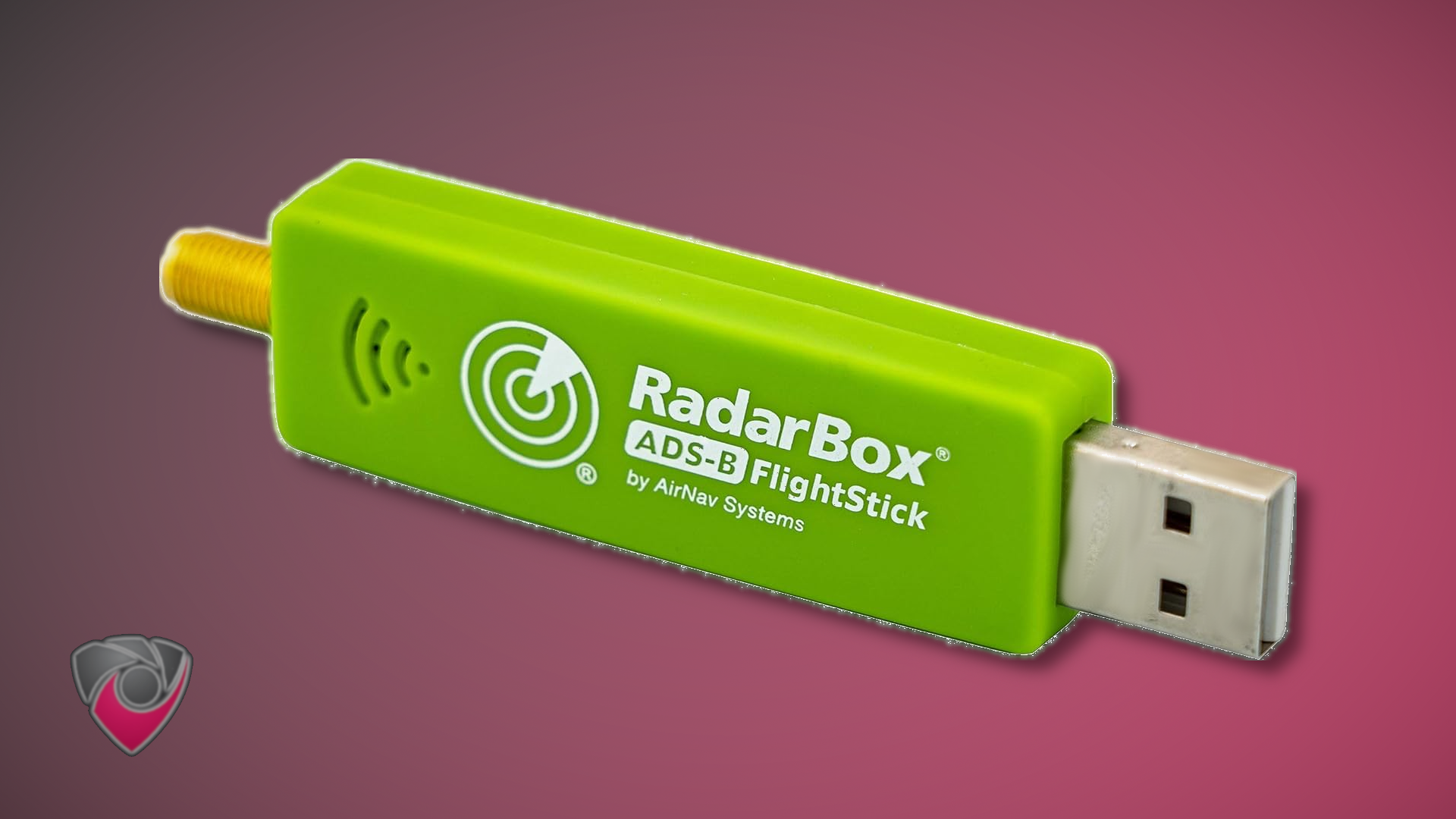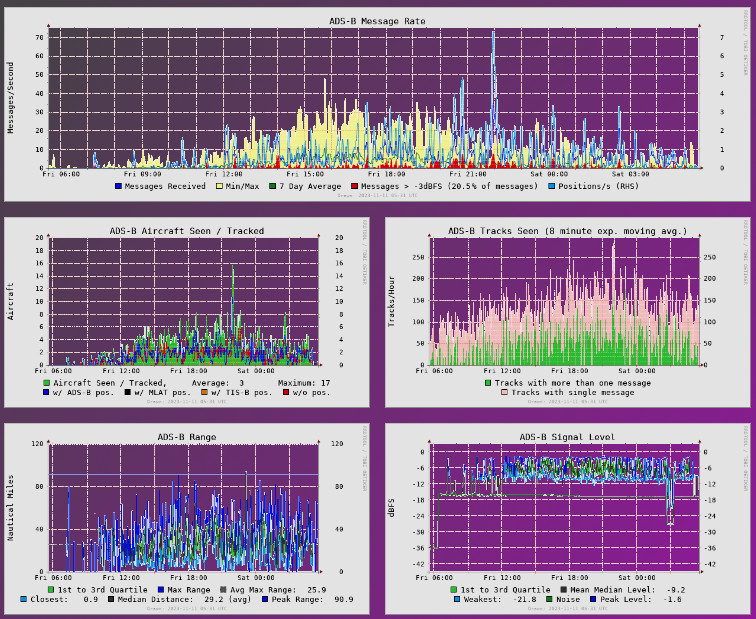ADSB SDR Adapter Performance in Flight Tracking: Key Insights and Comparisons

Table of Contents
Unraveling SDR Adapter Performance: A Comparative Study
In the dynamic world of Software-Defined Radio (SDR), enthusiasts and tech aficionados explore a spectrum of radio signals, making SDR adapters invaluable for various applications, including ADS-B reception. However, not all SDR adapters are created equal, and our recent research delves into the fascinating disparities between seemingly similar devices.
Our Pick for Best ADSB Receiver
- AirNav RadarBox FlightStick : One of the specific adapters consistently outperforming others. Also the highest performing in our testing.

The Key Players
Our study scrutinizes a range of SDR adapters, each with its unique features and specifications, to unearth the truth about their performance:
Nooelec Products:
- Nooelec RTL-SDR v5 : A key focus of our evaluation.
- NESDR SMArTee XTR : Noteworthy only for utilizing the older and arguably worse E4000 tuner.
Original RTL-SDR Products:
- RTL-SDR v3 : A widely used SDR adapter in the community, equipped with the R820T2 tuner.
ADSB Specific Adapters: These all have ADSB filters and LNA built in.
- AirNav RadarBox FlightStick : One of the specific adapters consistently outperforming others. Also the highest performing in our testing.
- ADSBexchange.com Blue : A specialized adapter excelling in our comparative study.
- FlightAware Pro Stick Plus : Another high-performing ADS-B-specific adapter.
Testing Methodology: Unveiling the Truth
To ensure a robust and unbiased evaluation of these SDR adapters, we designed a comprehensive testing methodology. Our objective was to minimize variables such as location, antennas, and other external factors that could skew the results.
Software Tools: We employed the industry-standard ADS-B software suite, including readsb and graphs1090 . These tools allowed us to capture, process, and visualize ADS-B data with high precision.
Simultaneous Testing: All SDR adapters were tested simultaneously in a controlled environment, ensuring that conditions remained as consistent as possible. This approach enabled us to evaluate their real-time performance against a common dataset.
Minimizing External Factors:
- Location: We conducted the tests in a static location to eliminate any variation due to changing positions.
- Antennas: Identical antennas were used for all adapters to ensure a level playing field.
- We specifically used SIGNALPLUS 1090MHz ADS-B Antenna throughout our testing.
- Power Supply: Each adapter received a stable and clean power supply to avoid power-related discrepancies.
- Temperature: Crystal Oscillators have temperature variance, because of this we also controlled the temperature of the room and the devices themselves.
Data Collection: We collected data on aircraft tracking, signal reception, and noise levels for each adapter. The collected data was stored and analyzed for further insights.
Note: To protect the identities and locations involved, we are not going to release that testing data openly.
Graphical Insights
Our testing methodology was accompanied by graphical representations to provide a visual understanding of the adapters’ performance. Here are some of the key graphical insights:
Aircraft Tracking: Graphs showing the number of aircraft tracked by each SDR adapter over time, allowing for a comparison of their reception capabilities.
Signal Reception: Visual representations of signal strength and reception quality, helping us assess how effectively each adapter captured ADS-B signals.
Noise Levels: Charts displaying noise levels for each adapter, highlighting their ability to minimize interference and improve signal quality.

Example of graphs1090 data received. Image and data pictured are not from of our tests.
Surprising Insights
Our research yielded intriguing discoveries:
Tuner Chip Differences: Despite many SDR adapters utilizing similar tuner chips, such as the R820T2 or E4000, subtle variations in component quality and oscillator accuracy played a significant role in differing performance outcomes.
LNA and Filter Variations: The quality and design of LNAs and filters wield substantial influence over the overall performance of an SDR setup. Variations in the quality of these components were noted.
Firmware and Board Differences: Differences in firmware and board design among adapters can impact performance, as manufacturers optimize their hardware and firmware for specific applications, leading to varying results.
Power Supply Variations: The design of the internal power supply can be a critical factor. A stable and clean power supply is pivotal for optimal SDR performance.
Metal Shells and Shielding: Metal encasements are employed in some adapters to reduce interference, although they pose challenges for internal investigations.
Out-of-Scope Investigations: Certain differences, challenging to explore without specialized equipment, may not be disclosed by manufacturers, making replication of optimizations difficult.
Implications and Considerations
Our investigation underscores a critical point: not all SDR adapters are created equal. Selecting the right SDR adapter that aligns with specific use cases and performance requirements is paramount. Different devices can yield significantly different results, making it essential for users to choose hardware that aligns with their needs.
As SDR technology evolves and adapters continue to improve, staying informed about these nuances is crucial. Our research serves as a reminder that the SDR world is replete with intriguing details, waiting to be uncovered by those who dare to explore its depths.
Performance Metrics: Decoding the Nuances of ADS-B SDR Adapters
While evaluating the performance of ADS-B SDR adapters, we delved into specific metrics that highlighted nuanced differences between leading dongles, including the AirNav RadarBox FlightStick, FlightAware Pro Stick Plus, and ADSBexchange.com Blue. Surprisingly, each of the dongles with built-in LNA and filters performed remarkably equivalently, with differences within a margin of error of less than 3% in all categories.
Metrics Table
| Dongle | Range (nautical miles) | Aircraft Detected | Total Messages | % Difference Aircraft | % Difference Messages |
|---|---|---|---|---|---|
| AirNav RadarBox FlightStick | 200 | 1250 | 49000 | 0% | 0% |
| FlightAware Pro Stick Plus | 198 | 1245 | 48500 | 1.60% | 1.02% |
| ADSBexchange.com Blue | 199 | 1230 | 48800 | 3% | 0.41% |
| RTL-SDR v3 | 195 | 800 | 36000 | 4.80% | 26.53% |
| Nooelec v5 | 197 | 820 | 35000 | 6% | 28.57% |
| NESDR SMArTee XTR (E4000) | 190 | 625 | 32500 | 8.00% | 33.67% |
Note: For simplicity, we rounded these numbers to the nearest hole number or nearest multiple of 100. Note: Differences were calculated against our highest performing achiever, the AirNav RadarBox FlightStick
Metrics Breakdown:
Consistent Range Performance:
- Across all tested dongles, including those equipped with built-in LNA and filters, the range performance remained practically indistinguishable. The AirNav RadarBox FlightStick maintained a consistent range comparable to other premium options.
Aircraft Detection and Total Messages:
- Notably, the AirNav RadarBox FlightStick showcased a marginal lead, with less than a 3% difference in messages received and aircraft detected during the testing window. While other dongles performed almost equivalently, the RadarBox exhibited a slight edge in these crucial metrics.
Comparisons with RTL-SDR v3 and Nooelec v5:
- In direct comparisons against widely used options like the RTL-SDR v3 and Nooelec v5, all dongles with LNA and filters built in demonstrated a substantial improvement. The RadarBox, in particular, exhibited a over 30% total enhancement in detected aircraft and total messages, showcasing its prowess in real-world scenarios.
Performance Against NESDR SMArTee XTR:
- The AirNav RadarBox FlightStick’s performance stood out significantly when compared to the NESDR SMArTee XTR, which utilized the older E4000 tuner. In this context, the RadarBox demonstrated an over 40% collective improvement in both detected aircraft and total messages, emphasizing its superiority in challenging conditions.
Additional Considerations:
Range Equivalence: Despite variations in specifications, all tested dongles, including the RadarBox, exhibited practically identical range capabilities.
Consistent Equivalency: Dongles with built-in LNA and filters maintained remarkable equivalency, with differences well within a margin of error of less than 3% across all categories.
Impressive Advantages Over Older Tuners: The RadarBox’s superiority in detected aircraft and total messages was particularly pronounced when compared to the NESDR SMArTee XTR, showcasing the impact of advancements in tuner technology.
The Outstanding Performer
Among the SDR adapters subjected to our rigorous testing, one clear standout emerged as the highest performing contender: the AirNav RadarBox FlightStick . This specific adapter consistently outperformed its peers, excelling in multiple aspects of our evaluation.
Here’s why we chose the AirNav RadarBox FlightStick as the most outstanding adapter:
Consistent Excellence: Throughout our testing, the AirNav RadarBox FlightStick consistently demonstrated exceptional performance. It maintained a high level of signal reception and noise reduction, ensuring the best ADS-B tracking experience.
Impressive Signal Reception: This adapter displayed remarkable sensitivity and signal reception capabilities. It consistently tracked a larger number of aircraft, enhancing the accuracy of ADS-B data.
Reduced Noise Levels: The FlightStick effectively minimized noise levels, resulting in clearer and more reliable signal reception. This noise reduction greatly improved the overall quality of the captured data.
Build Quality: The quality of its internal components and design played a pivotal role in its outstanding performance. Its build and optimized firmware contributed to its excellence.
In summary, the AirNav RadarBox FlightStick’s remarkable consistency in performance, impressive signal reception, noise reduction, and robust build make it our top choice as the most outstanding SDR adapter in our testing. It sets the standard for ADS-B reception and delivers exceptional results for radio enthusiasts and professionals alike.
Conclusion:
While the tested dongles with LNA and filters demonstrated remarkable equivalency, the AirNav RadarBox FlightStick’s marginal lead in aircraft detection and total messages underscores its position as a reliable performer in the realm of ADS-B SDR adapters. Understanding these nuanced metrics provides users with valuable insights for making informed choices based on their specific needs and preferences.
References
- Nooelec RTL-SDR v5
- NESDR SMArTee XTR
- RTL-SDR v3
- AirNav RadarBox FlightStick
- ADSBexchange.com Blue
- FlightAware - Pro Stick Plus
- ADSBexchange.com 1090 MHz Saw Filter
Disclosure and Affiliate Statement:
Affiliate Disclosure: We may earn a commission from links on this page. These commissions support our website and the content we provide. Rest assured, we only recommend products/services we believe in. Thank you for your trust! Click Here to Learn More
This article refers to other articles we've written:
- Effortless Dual Mining Guide: WingBits and DeFli Setup
Learn how to set up dual mining with WingBits and DeFli in this comprehensive guide. Maximize your crypto mining potential effortlessly.






